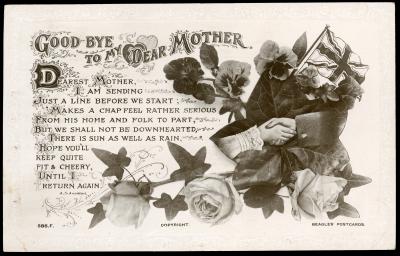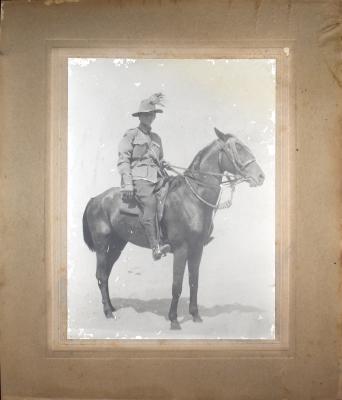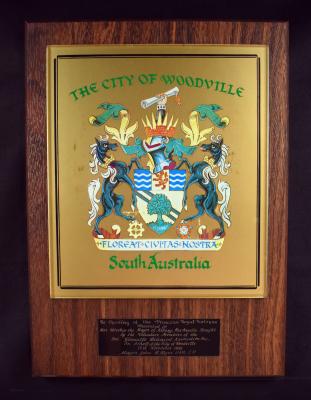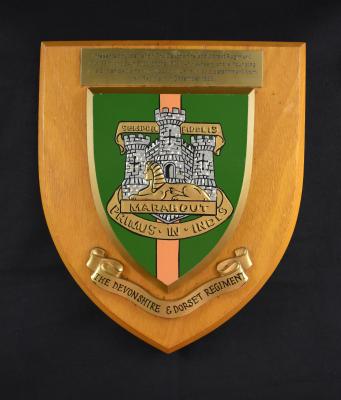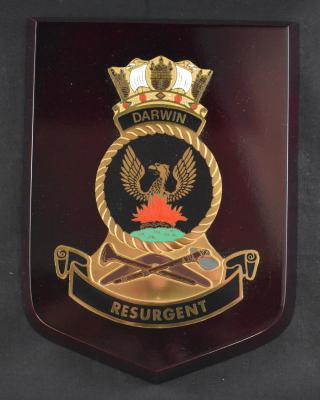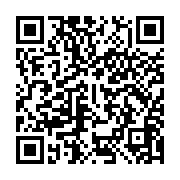SS Orvieto Brass Ashtray
c. 1909 - 1914Brass ashtray with scalloped edge embossed with the Orient Line flag flying on a short flagpole. The flag shows a cross (defined by vertical lines) and a crown at the center of the cross, Underneath is a banner displaying the ships name. A hand engraved inscription appears on the back of the ashtray together with a reverse image of the flag.
The 12,130 ton 'Orvieto' was built in the shipyards of Workman Clark & Company at Belfast for the Orient Steam Navigation Company and launched on 6 July 1909 at a cost of £335,713. She took her name from a town in Northern Italy. As a Royal Mail Ship and passenger vessel, RMS 'Orvieto' commenced runs from England to Brisbane on 26 November 1909.
At the start of the First World War, the ship was requisitioned by the Australian Government and fitted out as a troop transport in Sydney in 1914, with a capacity for 209 officers, 1,425 men and 22 horses. Designated as the flagship of the First Convoy and carrying Major General Bridges together with the newly appointed official correspondent Charles Bean among others, His Majesty's Australian Transport (HMAT) 'Orvieto' left Sydney in mid-October, bearing Convoy number A3. The entire convoy was assembled at Albany, WA, and sailed on 1 November 1914, the 'Orvieto' leading the convoy of 36 transports to Egypt. At Colombo, the ship took on board prisoners from the German raider SMS Emden, including the commander, Captain Karl von Muller, who had been captured after the ship's defeat by HMAS Sydney off Cocos Island.
After the troops and prisoners were disembarked at Egypt, the 'Orvieto' then sailed to London in preparation for another England-Australia voyage. Instead, it was requisitioned by the Admiralty and fitted out as an armed merchant cruiser with eight 6-inch guns. As HMS 'Orvieto', the ship operated as a minelayer and was involved in the interception and capture of over 30 foreign merchantmen. The ship was returned to the Orient Steam Navigation Company at the end of 1918 and returned to England-Brisbane mail run for the next eleven years. Her last voyage was in 1930 after which she was sold for scrap and broken up in 1931.
The ashtray is believed to be a souvenir obtained by a member of the AIF on his journey to Egypt onboard the Orvieto. The ashtray was in the possession of the Subiaco Rifle Club for many years and is assumed to have been left there by a member.
Details
Details
Front: “Orient Line Flag” / “S.S. ORVIETO.”
Back: “SS ORVIETO” / “WITH 1st CONVOY” / “TO LEAVE AUST” / “NOV” / “1914” / “EX KING GEORGES SND”
Item is from the SS Orvieto which was the flagship of the 1st Convoy that left Albany for Egypt in 1914.
Open in Google Maps
Nearest geotagged records:
- Invalid Cup (0km away)
- Peter LONEY Letter (0km away)
- Ellis SILAS Water Colour Painting (0km away)
- Engraved Japanese Water Bottle belonging to Robert George Staunton RENNIE WX7493 (0km away)
- Enlistment Poster (0km away)
- W. D. & H. O. Wills Lace Flag Cigarette Cards (0km away)
- First world War Picture Postcard (0km away)
- Photograph of the Japanese surrender to Australia on 13 September 1945. (0km away)
- Engraved Tin given to Major Arthur Robinson HOME WX11151 (0km away)
- Martini-Henry action (0km away)
Nearby places: View all geotagged records »
Princess Royal Fortress Military Museum
Princess Royal Fortress Military Museum
Other items from Princess Royal Fortress Military Museum
- First World War “Good Bye to my Dear Mother” Postcard from Private William Dobson STEVENS 4002
- Black and white photographic postcard of Trooper Henry RISEBOROUGH on his mount ‘Gus’
- City of Woodville Plaque
- Princess Royal Fortress (The Forts) Plaque
- Princess Royal Fortress (The Forts) Re-opening Plaque
- Western Australian Tourism Commission Plaque
- The Devonshire and Dorset Regiment Plaque
- America's Signal Lookout Plaque
- HMAS Sirius Plaque
- HMAS Darwin Plaque
- HMAS Bunbury Plaque
- HMAS Nirimba Plaque
